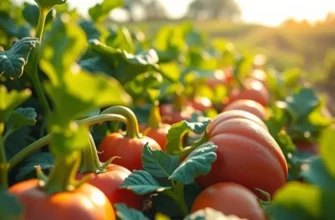As dietary trends evolve, the emphasis on low-sodium vegetarian diets is gaining traction among health-conscious individuals. This approach not only reduces sodium intake but also promotes the consumption of plant-based foods. With an increasing number of people exploring ways to enhance their well-being, understanding the foundations and benefits of this dietary choice is essential. A low-sodium vegetarian diet can help alleviate health concerns while offering a variety of flavors and nutrients. Join us as we delve into the essentials of this exciting dietary trend.
Understanding Low-Sodium Vegetarian Diets

A low-sodium vegetarian diet is defined by its emphasis on minimizing salt intake while excluding meat and fish. This dietary approach focuses on consuming whole foods such as fruits, vegetables, legumes, nuts, seeds, and whole grains. By avoiding processed foods and incorporating fresh ingredients, individuals can significantly reduce their sodium intake.
The World Health Organization recommends a sodium intake of less than 2,000 milligrams per day, yet many people consume far more. High sodium consumption is linked to elevated blood pressure, which is a risk factor for heart disease and stroke. By adopting a low-sodium vegetarian diet, individuals can take proactive steps towards improving their cardiovascular health.
The potential health benefits of this diet extend beyond heart health. Reducing sodium intake can also aid in preventing kidney disease and osteoporosis. Sodium can cause calcium to leach from bones, weakening them over time. Additionally, a diet rich in whole plant foods provides essential nutrients and antioxidants that support overall health and contribute to longevity.
One of the basic principles of a low-sodium vegetarian diet is to opt for fresh or minimally processed foods. Canned, processed, or pre-packaged items often contain high levels of salt for preservation and flavor enhancement. Instead, aim to fill your plate with a variety of colorful vegetables, fruits, and grains to obtain a balance of nutrients without the added sodium.
Flavor enhancement without salt is crucial for maintaining a satisfying diet. Spices, herbs, garlic, and citrus juices are excellent alternatives to salt. These not only add flavor but also offer unique health benefits, such as antioxidants and anti-inflammatory properties. Experimenting with different combinations can keep meals exciting and prevent boredom.
For more information on substituting salt with other flavor boosters, consider visiting our guide on flavor boosters without salt. This resource provides practical tips for enhancing taste without compromising sodium goals.
Meal planning is another critical aspect of a low-sodium vegetarian diet. Preparing meals at home allows for better control over the ingredients and the amount of sodium used. Try batch cooking grains or legumes at the start of the week to streamline meal preparation while maintaining a healthy diet.
Incorporating diverse foods ensures nutritional adequacy. Legumes and seeds can be excellent sources of protein and micronutrients. Leafy greens and fortified foods can help meet nutritional needs that might otherwise be lacking without animal products.
A low-sodium vegetarian diet can not only improve health outcomes but also promote sustainability. By choosing plant-based options and reducing processed food intake, individuals contribute to a more eco-friendly lifestyle. This approach aligns with a desire for simpler, healthful living that supports both personal and planetary health.
Practical Tips for Adopting a Low-Sodium Vegetarian Diet

Transitioning to a low-sodium vegetarian diet can seem daunting. With thoughtful planning and creativity, it becomes both a rewarding and delicious endeavor. To start, understanding your current sodium intake is essential. Check food labels for sodium content, aiming to consume less than 2,300 mg per day as recommended by health guidelines. For many, this number may be lower to mitigate certain health conditions.
Embrace Fresh Ingredients
Fresh fruits and vegetables naturally contain minimal sodium. They should form the cornerstone of your diet. Rather than relying on canned or processed vegetables, opt for fresh or frozen options. When using canned vegetables or beans, look for “no salt added” versions or rinse those packed with sodium to remove excess salt.
Experiment with Herbs and Spices
Herbs and spices are your best allies in reducing salt reliance while still delivering flavor punch. Ingredients like garlic, ginger, cumin, and turmeric can elevate the taste without the need for salt. Consider creating your spice blend or use a salt-free seasoning mix to enhance dishes. For more ideas on boosting flavor without salt, check out this guide on flavor boosters.
Mindful Cooking Techniques
The way you cook can also influence flavor absorption. Techniques like roasting, grilling, and steaming can concentrate and enhance natural flavors. Roasting brings out sweetness in vegetables, reducing the need for additional salt. Be strategic with fats and acids; olive oil, lemon juice, and vinegar can enhance taste profiles remarkably.
Smart Shopping Strategies
Look for products labeled “low sodium” or “no salt added.” Bread, cheeses, sauces, and snack foods can harbor hidden sodium, so a thorough examination of ingredients is crucial. Even seemingly healthy vegetarian products like veggie burgers or plant-based cheeses may have elevated sodium levels.
Batch Cooking and Meal Prep
Batch cooking allows greater control over sodium content and can simplify meal planning. Prepare large quantities of grains, beans, and vegetables at once. This will enable you to season and store them for future meals with less salt. Explore various low-sodium recipes and keep your meals varied to avoid flavor fatigue. For inspiration, consider practical batching techniques to streamline your process.
Avoid Processed Condiments
Many condiments are high in sodium. Soy sauce, ketchup, and salad dressings often sneaking salt into your meals. Make your own dressings or sauces at home, allowing you to tailor them to your taste and minimize sodium.
Evaluate and Adjust
Transitioning to a low-sodium diet takes time. Regularly evaluate your progress. Adjust recipes gradually, and your palate will adapt to less salty flavors. Celebrate small victories and explore the diversity of vegetarian cuisine. With commitment, a low-sodium diet can enhance your health and broaden your culinary horizon.
Final words
Adopting a low-sodium vegetarian diet presents a unique opportunity to improve your health while enjoying a diverse range of delicious foods. By focusing on fresh produce, whole grains, and legumes, you can effectively manage your sodium intake and reduce the risk of health issues such as cardiovascular disease. This approach not only prioritizes your well-being but also fosters an appreciation for the flavors and benefits of plant-based eating. As you embark on this journey, remember that small, mindful changes can lead to significant long-term outcomes. Embrace the vibrant world of vegetarian cuisine and discover a healthier lifestyle that resonates with your values and goals.








